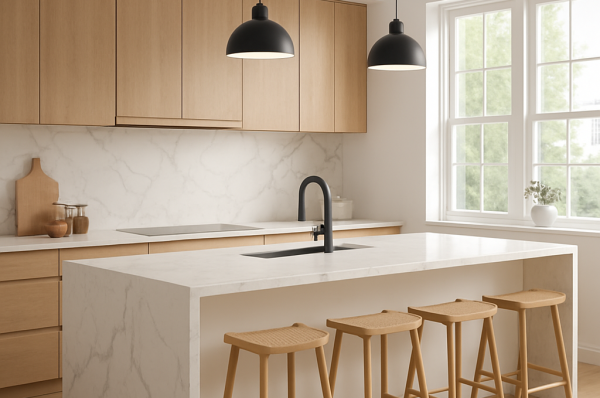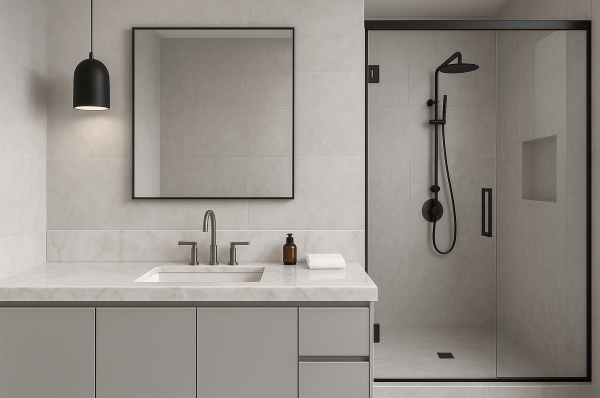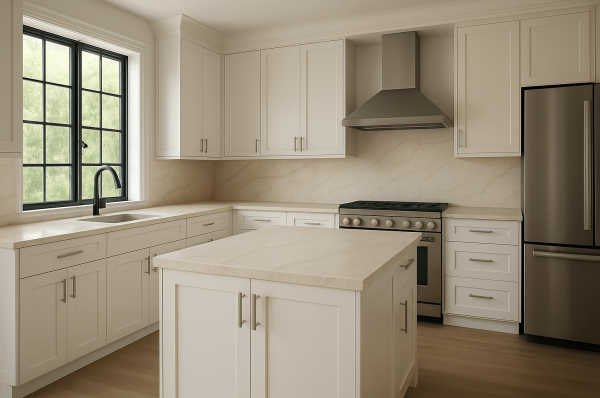When it comes to choosing the perfect material for your kitchen countertops, bathroom vanities, or custom stone projects, size matters—especially when dealing with natural stone slabs. Understanding countertop slab sizes, full slab dimensions, and knowing how big a stone slab typically is can save you time, money, and stress during your renovation.
In this guide, we break down everything you need to know about stone slab sizes before making a purchase.
🧱 What Is a Stone Slab?
A stone slab is a large, flat piece of natural or engineered stone—like granite, quartzite, marble, quartz, or soapstone—cut from a quarry block or fabricated for use in residential and commercial surfaces. These slabs are then shaped, polished, and installed as countertops, wall panels, or flooring.
Whether you’re doing a full kitchen remodel or designing a custom fireplace surround, the size of the slab plays a key role in design, seam placement, and project pricing.
📏 Standard Countertop Slab Sizes
The most common countertop slab sizes vary depending on the type of stone and the supplier, but here are the industry averages:
| Stone Type | Typical Slab Size (in inches) | Typical Slab Size (in feet) |
|---|---|---|
| Granite | 108″–132″ x 60″–78″ | 9’–11′ x 5’–6.5′ |
| Quartzite | 120″–138″ x 65″–78″ | 10’–11.5′ x 5.5’–6.5′ |
| Marble | 100″–120″ x 55″–75″ | 8’–10′ x 4.5’–6.25′ |
| Quartz | 120″–126″ x 55″–65″ | 10’–10.5′ x 4.5’–5.5′ |
👉 Keep in mind: These are general guidelines. Always check with your supplier for the exact full slab dimensions of the material you’re considering.
🔍 How Big Is a Stone Slab?
If you’re wondering how big a stone slab really is—it depends on the stone and the quarry, but most slabs fall between 50 to 60 square feet in surface area. Larger slabs, especially in quartzite and some granites, can exceed 70 square feet, which is ideal for large kitchen islands or fewer seams in your design.
📌 Pro Tip: If your project requires long, uninterrupted surfaces (like a large island), request slab sizes that minimize the need for seams.
✂️ Half Slabs vs. Full Slabs
When sourcing your stone, you may hear the terms half slab or remnant. Here’s the difference:
- Full Slab: The entire, uncut piece of stone—ideal for full kitchens, large vanities, or matching surfaces.
- Half Slab: A full slab that’s been cut in half—often used for smaller projects or paired with another material.
- Remnants: Leftover pieces from other projects—great for bathroom vanities, bar tops, or fireplace surrounds at a lower cost.
Understanding these terms will help you better estimate how much material you need and what fits your budget.
🧠 Things to Consider Before Buying
Before selecting a slab, here are a few important tips to keep in mind:
- Measure Carefully: Have your fabricator take final measurements to determine the number of slabs required.
- Visit the Slab Yard: Always view the stone in person. Movement, color, and veining vary from slab to slab—especially with natural materials.
- Ask About Seams: If your design requires multiple slabs, ask how and where seams will be placed.
- Check for Matching Lots: For large projects, matching slabs from the same quarry block ensure better consistency in pattern and tone.
🏁 Final Thoughts
Whether you’re upgrading a kitchen, designing a bathroom, or building a custom piece, understanding countertop slab sizes and knowing how big a stone slab typically is will help you make smarter decisions and avoid costly surprises.
Choosing the right full slab dimensions not only ensures your space looks seamless and stunning—it also helps you stay within budget and on schedule.
📍 Need help choosing the perfect slab size for your next project?
Visit Stone Park USA, just 10 minutes from Philadelphia, to browse our wide selection of premium natural and engineered stone slabs. Our expert team is here to guide you through the process.




